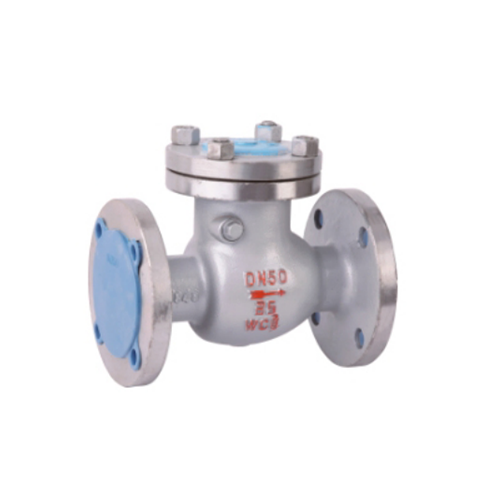
Stop Valve Performance Testing Under Dynamic Conditions
1. Introduction
Stop valves are critical components in various industrial applications, including oil and gas, water distribution, chemical processing, and power generation. Their primary function is to regulate or completely shut off fluid flow within a pipeline. Given their importance, ensuring their reliability under dynamic conditions is essential for operational safety and efficiency.
Performance testing under dynamic conditions evaluates how stop valves respond to real-world operational stresses, such as fluctuating pressures, rapid actuation, temperature variations, and fluid dynamics. This paper explores the methodologies, standards, and key parameters involved in stop valve performance testing under dynamic conditions.
2. Importance of Dynamic Performance Testing
Static testing alone is insufficient to assess a valve's performance in real-world scenarios. Dynamic conditions introduce additional stresses that can affect sealing integrity, actuation response, and structural durability. Key reasons for dynamic performance testing include:
- Flow-Induced Vibrations: High-velocity fluids can cause vibrations, leading to wear and potential failure.
- Pressure Surges (Water Hammer): Rapid valve closure can generate pressure spikes that may damage the valve or pipeline.
- Thermal Cycling: Temperature fluctuations can cause material expansion/contraction, affecting sealing performance.
- Cyclic Fatigue: Repeated opening and closing can lead to mechanical wear and degradation over time.
- Corrosion and Erosion: Dynamic flow conditions can accelerate material degradation due to cavitation or particle abrasion.
3. Testing Standards and Regulations
Several international standards govern stop valve performance testing, including:
- API 598: Valve inspection and testing (covers pressure tests and leakage rates).
- ISO 5208: Industrial valve pressure testing.
- ASME B16.34: Valves—flanged, threaded, and welding end.
- MSS SP-61: Pressure testing of steel valves.
- API 6D: Pipeline valves (covers performance under dynamic conditions).
These standards define test procedures, acceptance criteria, and reporting requirements to ensure consistency and reliability.
4. Key Performance Parameters in Dynamic Testing
4.1 Leakage Rate Testing
Leakage testing evaluates the valve's ability to maintain a tight seal under dynamic conditions. Common methods include:
- Bubble Test (Air or Gas): Submerging the valve in water and observing bubble formation.
- Hydrostatic Test: Applying water pressure and measuring leakage.
- Helium Mass Spectrometry: Detecting minute leaks in high-pressure gas applications.
4.2 Pressure Cycling Test
This test assesses the valve's ability to withstand repeated pressure fluctuations without failure. The valve is subjected to multiple cycles of pressurization and depressurization while monitoring for leaks, deformation, or fatigue cracks.
4.3 Flow Coefficient (Cv) Testing
The flow coefficient measures the valve's capacity to allow fluid passage under varying pressure differentials. A higher Cv indicates better flow efficiency. Testing involves measuring flow rates at different valve positions and pressure drops.
4.4 Cavitation and Erosion Testing
Cavitation occurs when rapid pressure changes cause vapor bubble formation and collapse, leading to material damage. Erosion testing evaluates wear due to high-velocity particle-laden fluids. Both tests simulate extreme flow conditions to assess long-term durability.
4.5 Actuation Performance Testing
Dynamic testing includes evaluating the valve's response time, torque requirements, and sealing effectiveness during rapid actuation. Automated actuators are often used to simulate real-world operational speeds.
4.6 Thermal Shock Testing
Valves in high-temperature applications must endure sudden temperature changes. Thermal shock testing involves rapid heating and cooling cycles to assess material integrity and sealing performance.
5. Test Setup and Instrumentation
A comprehensive dynamic testing setup includes:
- Test Loop: A closed-loop system with pumps, flow meters, and pressure regulators to simulate operational conditions.
- Data Acquisition System: Sensors for pressure, temperature, flow rate, and valve position.
- Actuation Mechanism: Electric, pneumatic, or hydraulic actuators for automated valve cycling.
- High-Speed Cameras: To capture cavitation or vibration effects.
- Leak Detection Equipment: Such as ultrasonic detectors or mass spectrometers.
6. Case Study: Dynamic Testing of a High-Pressure Stop Valve
6.1 Test Objectives
- Evaluate leakage rates under cyclic pressure conditions.
- Measure flow characteristics at different opening positions.
- Assess cavitation resistance at high flow velocities.
6.2 Test Procedure
1. Initial Hydrostatic Test: Pressurize to 1.5x rated pressure and check for leaks.
2. Pressure Cycling: Perform 1,000 cycles between 10% and 100% of rated pressure.
3. Flow Coefficient Measurement: Record flow rates at 25%, 50%, 75%, and 100% valve openings.
4. Cavitation Test: Increase flow velocity until vapor bubbles form, then monitor material wear.
5. Final Leak Test: Repeat hydrostatic test to confirm no degradation.
6.3 Results
- Leakage Rate: Within acceptable limits per API 598.
- Flow Efficiency: Cv remained stable across multiple cycles.
- Cavitation Threshold: Identified critical flow velocity for safe operation.
- Actuation Reliability: No significant torque increase after cycling.
7. Challenges in Dynamic Testing
- Reproducing Real-World Conditions: Lab environments may not fully replicate field conditions.
- Instrumentation Accuracy: High-speed dynamics require precise sensors.
- Cost and Time: Extensive testing can be resource-intensive.
- Standardization Gaps: Some dynamic conditions lack standardized test protocols.
8. Future Trends in Valve Testing
- Digital Twin Simulations: Using computational models to predict valve behavior under dynamic loads.
- AI-Based Predictive Maintenance: Machine learning to analyze test data and forecast failure modes.
- Advanced Materials Testing: Evaluating new alloys and coatings for enhanced durability.
- Automated Test Rigs: Robotics for high-throughput dynamic testing.
9. Conclusion
Dynamic performance testing of stop valves is essential to ensure reliability, safety, and efficiency in industrial applications. By adhering to international standards and employing advanced testing methodologies, manufacturers can validate valve performance under real-world conditions. Future advancements in simulation and automation will further enhance testing accuracy and efficiency, contributing to the development of more robust valve systems.
10. References
- API 598: Valve Inspection and Testing
- ISO 5208: Industrial Valves – Pressure Testing
- ASME B16.34: Valves – Flanged, Threaded, and Welding End
- MSS SP-61: Pressure Testing of Steel Valves
- API 6D: Pipeline Valves
This paper provides a comprehensive overview of stop valve dynamic testing, emphasizing the importance of rigorous evaluation to meet industry demands.
Este sitio web utiliza cookies para garantizar que obtenga la mejor experiencia en nuestro sitio web.
Comentario
(0)